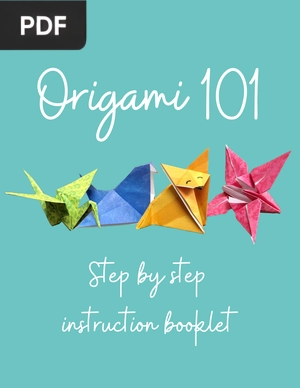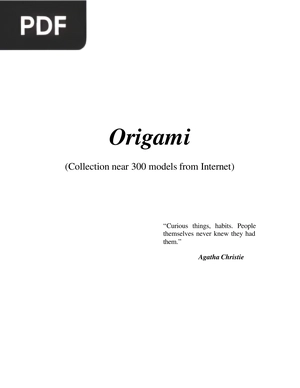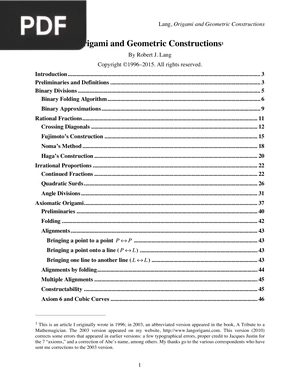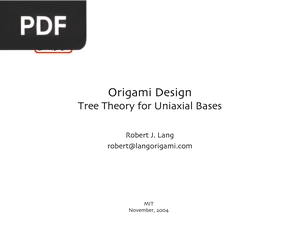Architectural Origami Architectural Form Design Systems based on Computational Origami
Author: Tomohiro Tachi
*Wait a few seconds for the document to load, the time may vary depending on your internet connection. If you prefer, you can download the file by clicking on the link below.
Information
Description: Architectural Origami Architectural Form Design Systems based on Computational Origami by Tomohiro Tachi explores computational methods for designing architectural forms using origami principles. This document unveils innovative techniques to create complex, foldable structures, inspiring architects and designers alike.
Pages: 129
Megabytes: 16.83 MB
This may interest you
Origami 101-Step by step instruction booklet
Extension: PDF | 22 pages
Origami 101-Step by step instruction booklet por Welcome to Brookings Public Library, SD offers a beginner-friendly guide to origami. It includes step-by-step instructions for basic folds and popular models like the crane, fox, and iris, making it an excellent resource for learning this traditional art form.
Origami
Extension: PDF | 990 pages
Origami by Vidin, Bulgaria is a collection of nearly 300 origami models from the internet. Explore the art of paper folding with diverse diagrams.
Origami and Geometric Constructions
Extension: PDF | 56 pages
Origami and Geometric Constructions by Robert J. Lang explores geometric principles through origami. It details folding techniques for constructing rational and irrational proportions, bridging math and art.
Origami Mathematics in Education
Extension: PDF | 72 pages
Origami Mathematics in Education by Michael Assis explores the intersection of origami and mathematical principles in education. It offers insights into geometric constructions and folding techniques, making it valuable for educators.
Origami Design Tree Theory for Uniaxial Bases
Extension: PDF | 46 pages
Origami Design Tree Theory for Uniaxial Bases by Robert J. Lang introduces a mathematical framework for origami design. It explains how to use tree theory to create crease patterns, making it essential for serious origami designers.











































